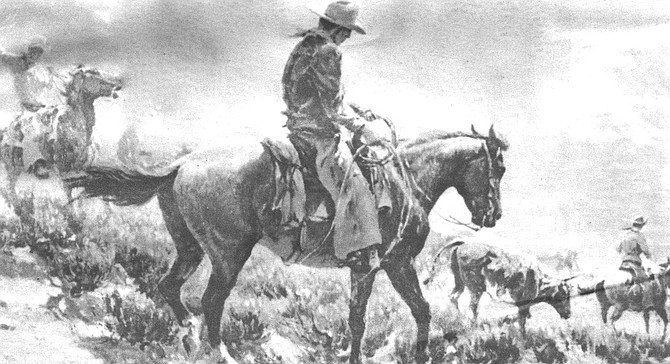
Detail from Salt River Canyon. Wieghorst sold paintings to John Wayne, Roy Rogers, and Gene Autry. Presidents Dwight Eisenhower, Richard Nixon, Gerald Ford, and Ronald Reagan bought his work, and Barry Goldwater wrote the foreword to the only biography written about him.
- (first in series of six stories)
- “The raids, all made with search warrants, started soon after noon and were not completed until early evening. All of the seizures, incidentally, were made within a radius of a few blocks either in or near the 1600 block on India Street. Some of the addresses where raids were made were on West Date, West Grape and Atlantic Streets and Kettner Blvd. The raiding officers described the work as a general house cleaning of wine-selling establishments in the Italian section.
- By Judith Moore, Dec. 5, 1996
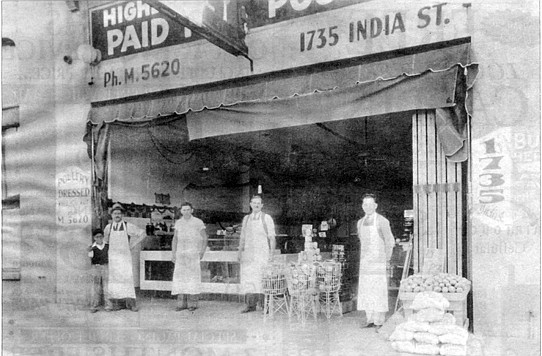
Tait’s market, 1735 India Street, four doors down from 1753 India Street bombing
San Diego Historical Society Photograph Collection
- My father would scout the county, looking for potential hunting sites, often finding caches just as valuable. Somewhere between Solana Beach and Oceanside, where the original El Camino Real was two parallel dirt ruts through the weeds going up a hill near an old adobe stagecoach stop (which is most likely now enclosed in chainlink fencing), he found huge beaver tail cactus, bearing fruits called nopales or cactus apples.
- By Cris Mazza, Nov. 28, 1996

My sister with hand plow. My father came across an abandoned farm off Dairy Mart Rd. There was rusted equipment — an old well pump, a hand plow — and one lone live fig tree.
- Compact, red-headed, with bulging biceps, Cliff Graham was admired by his ski buddies for his bravado, intelligence, wit, and ability to milk cash from schemes that ended up losing money for everybody but himself and his friends. He drove fast cars, worked out in a private gym, skied Aspen and Mammoth, sailed boats, packed a pistol, owned two airplanes, buddied up with pro football stars, claimed he "owned" San Diego's judges.
- By Matt Potter, Oct. 24, 1996
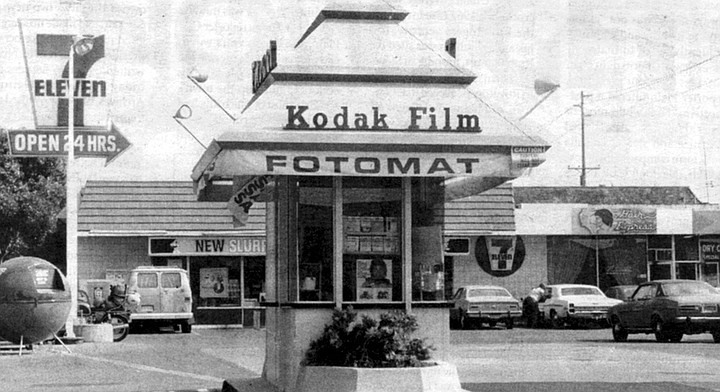
Fotomat kiosks were staffed by young women, called “Fotomates,” dressed in hot pants, a gimmick patterned after the stewardesses of another San Diego start-up, Pacific Southwest Airlines.
San Diego Historical Society
- They were going to suffocate the boy. "We knew if the baby cried, we would all be dead. So one of the men put his hand over the baby. To suffocate it. It was terrible, but better one child die than ll the children, all of us."mThese are the choices in war. “You don’t know what people have been through to get here to San Diego,” Zia Waleh says.
- By Bill Manson, Sept. 26, 1996 .
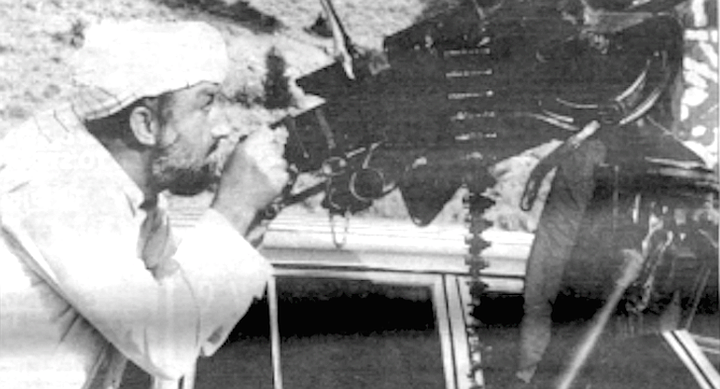
Zia Waleh in Afghanistan. “I belonged to the Islamic Front of Jihad. We fought the USSR alone. Two million of my people have been lost. One million maimed."
- The traffic, which has been moving fairly smoothly, stops at Santa Fe Drive. “That’s almost a constant,” Anly says casually. Beside us, people line up at the freeway ramp lights; she’s known it to take five minutes just to get onto the freeway. Sometimes the police will set up a device that will shoot a photo of anyone who runs the light, recording the front of their car and the license plate. Amy once triggered it, she said. “I could see it flash. But I don’t have a front license plate,” and she got off scot-free.
- By Tim Brookes, Sept. 12, 1996

A 15-seater may run $1300 a month, but SANDAG subsidizes the costs, and Dorina tells me that her own share comes to $38 a month for everything.
- It’s just like it was yesterday. On November 27 [1950] we were in a little village of Hagaru [North Korea]. That was the day the Chinese attacked further north and headed our way. There were three of us on a street corner with a 30-caliber machine gun. Our field of fire was the main street of the town. To our left, to the east, was a building — maybe it was a school — with what must have been a playground next to it. It was snowing, you know, and we laid there all night, waiting for we didn’t know what.”
- By David Burge, June 20, 1996
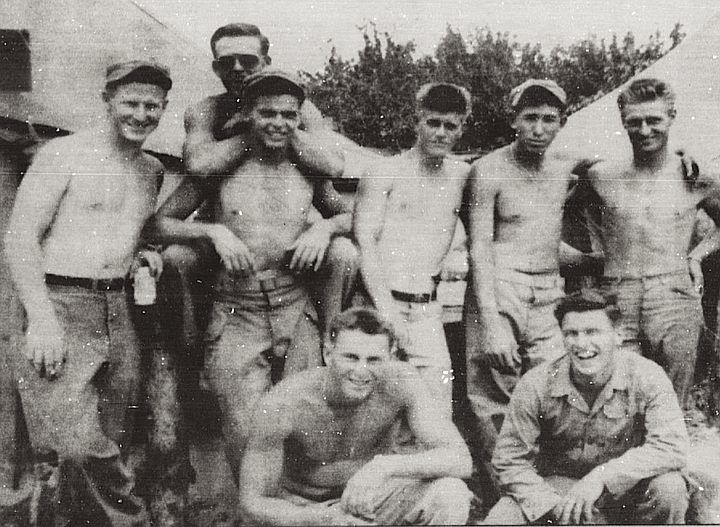
Members of B Company, 1st Marine Division, 1st Motor Transport Battalion, Korea (Robert Weishan at far left). Weishan: “There were terrible problems with high tides — at Inchon they ran 18 to 20 feet."
- I realized to approach women down there would make me look suspicious, if not unwholesome. Gay men would think I was hitting on them. And single men of whatever sexual persuasion were not down there, I concluded, to give interviews. Weren’t questions themselves rude — nudism’s something you do, not discuss, right?
- By Alexander Theroux, June 13, 1996
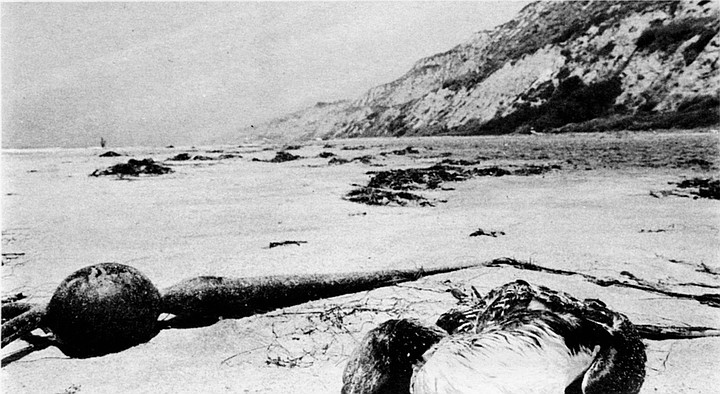
Black's Beach
- Dressed in long trousers and boat shoes and a white Lacoste tennis shirt, I accompanied Toby across Vista del Mar and Neptune Place to the Pump House and down concrete steps to the beach. The first things I noticed were not the bitchin’ sets of waves breaking way off shore, nor the surfers paddling way out there waiting to ride, nor the surfers with lots of white hair waxing their boards near the water’s edge. I noticed, of course, the babes, and so did Toby.
- By Geoffrey Wolff, May 9, 1996

Author at Princeton (third from left). The last time I had intersected with him, he had swept through Princeton in a car sought for repossession, charging clothes and books and jazz records to my accounts.
- In 1960 San Diego was the most active tuna port in the world. The fleet consisted of about 135 boats. At any given time, 30 or 40 were tied up at the Embarcadero, in port between trips to the tropical grounds, to places as distant as the Galapagos Islands. There was the familiar sight of cotton bait nets drying after being cured or of the new, large nylon nets just coming into use. And nearby were the canneries that employed hundreds of people. And the steamy, billowing smell of fish processing.
- By Douglas Whyknott, May 23, 1996
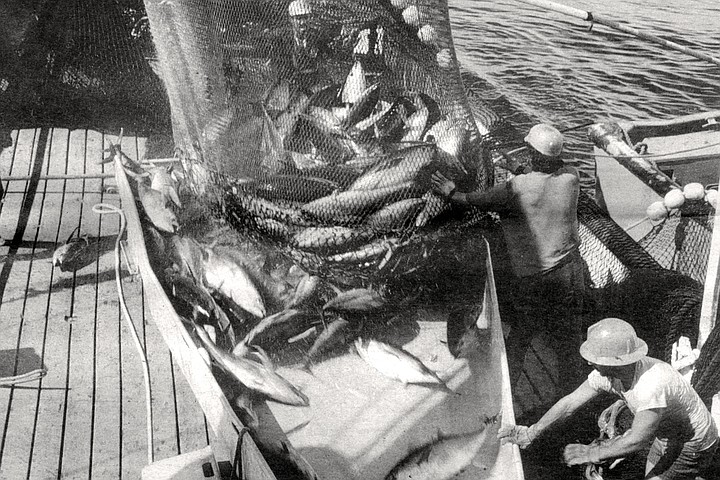
A catch is hauled aboard a San Diego tuna seiner. Many of the older generation think that the dolphin activists “ruined a beautiful industry."
- In desperation I went to the white pages. There, straightforwardly and to the point, was the listing “Pigeon Racing," with a phone number in Lemon Grove. My call was answered by Ron Steinbrenner, keeper of the Lemon Grove loft. He told me that a big race was coming up. He called it the Kentucky Derby of pigeon racing.
- By Judy Henske, April 25, 1996
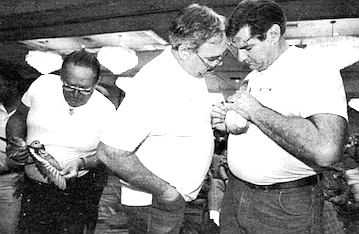
There is nearly every kind of human here in Lemon Grove.
Photo by Sandy Huffaker, Jr.
- So when we came to Fallbrook two years ago, we built our house on a hill above an acre of orange trees. They were planted in the 1960s by a man named Mr. Barr who, like us, was not a farmer. The leaves are green and eyeshaped, and beyond them to the north and south other hills are scored with avocado, lemon, lime, and orange groves, the distant rows curving in precise, parallel lines.
- By Laura McNeal, Jan. 4, 1996
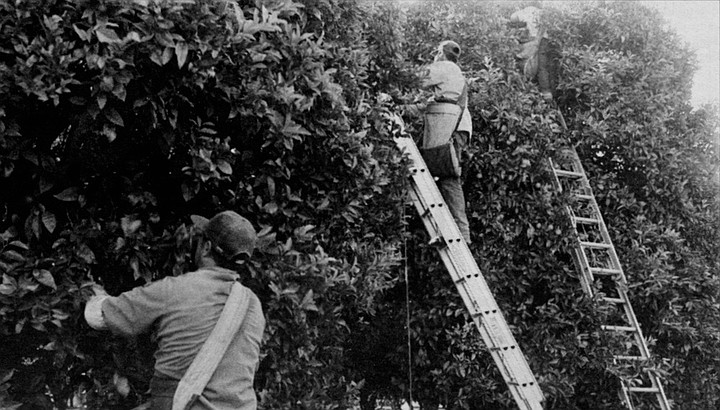
Picking citrus, like riding horses, is more difficult than it appears.
- The Louis Almeida case should be closed. During a seven-year period in the ’80s, he took San Diego art collectors for hundreds of thousands of dollars through forgeries and fraud. At least, that’s what he admitted to when he was caught in 1989. He was sent to prison that same year, served his time, and was released in July 1994.
- By Phyllis Orrick, Jan. 25, 1996
 Facebook
Facebook
 X
X
 Instagram
Instagram
 TikTok
TikTok
 Youtube
Youtube
























